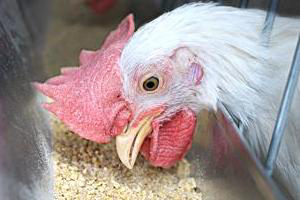IRTA: Strategies for improving broiler feed conversion

Initial studies carried out on broilers and finishing pigs have allowed the identification of feeding strategies that improve Feed Conversion Efficiency (FCE) in monogastrics.
That was reported in a recent press release by the Catalan research institute dedicated to agri-food research & development (IRTA), headquartered in Barcelona, Spain.
Efficient use of nutrients
Regarding nutritional conditioning, tests in broiler chickens revealed that the use of diets that are limiting in specific nutrients during the first days of life improves the efficiency of use of such nutrients later in life. In the case of phosphorus, it has been observed that conditioning for this nutrient has a positive effect on bone mineralisation, while conditioning for methionine improves feed efficiency in subsequent stages.
Preliminary tests were also out with a wide range of combinations of exogenous enzymes with the purpose of identifying those with a higher potential of improving FCE to be studied in the future. This work will further contribute to improved knowledge on how to optimise feeding strategies for pigs and broiler chickens such that feed efficiency is maximised and ecological footprint minimised.
Feeding accounts for 70% of costs
IRTA reports that feeding accounts for around 70% of the cost of animal production. According to the institute, FCE is one of the key factors in cost-efficiency of production. For this reason European scientists are working on the ECO-FCE project, aimed at proposing strategies to optimise feed efficiency in monogastrics, while reducing greenhouse gas emissions and nitrogen and phosphorus excretion.
IRTA, as an ECO-FCE project partner, is carrying out studies to evaluate various feeding strategies in pigs and broiler chickens, targeting both the way feed is supplied and feed composition. The results obtained so far were presented at an industry workshop preceding the Annual European Federation of Animal Science (EAAP) Conference in Warsaw, Poland, in August.












